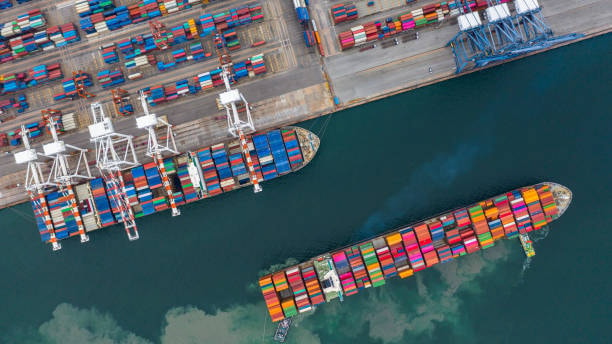
When working on international shipping, cargo processing and logistics, it can be relatively complicated and confusing to acquire knowledge about all the diverse delivery terms of cargo processing and handling, as used in international business to convey cargo to various parts of the world. A CY/CY (Container Yard to Container Yard) delivery system is one of the basic notions of container shipping. Here is a complete guide with all you may want to learn about CY/CY shipping: its elementary definition, current applications in contemporary logistics processes.
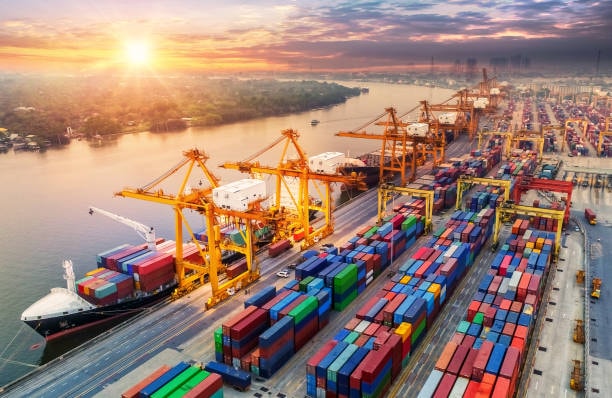
About GWT Worldwide: Shenzhen Guanwutong International Freight Forwarding Co.,Ltd. (GWT Worldwide), a recognized freight forwarder, is a professional logistic service provider which specializes in international freight forwarding, international supply chain and cross-border e-commerce logistics. GWT Worldwide offers reliable, cost-efficient worldwide logistics services powered by state-of-the-art technology and rooted in the worldwide network of trusted partners locating the range of services standards: the experience in air freight, sea freight, China-Europe railway transport, international express solutions, customs clearance, warehousing, Amazon FBA shipping support, as well as the ability to provide the highest quality of services.
What is CY/CY (Container Yard to Container Yard) in Shipping?
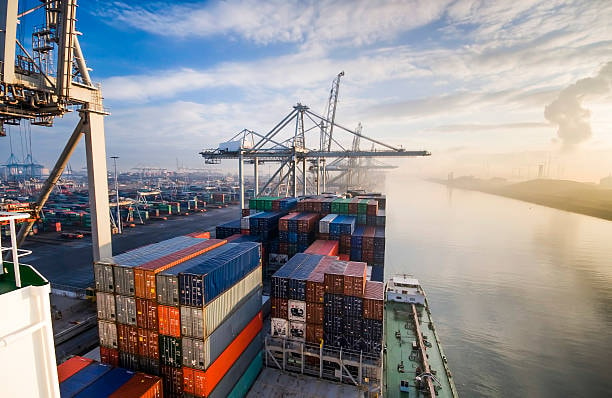
CY/CY which is short form of Container Yard to Container Yard is a typical shipping jargon in international freight forwarding which refers to the liability and touch point of containerised shipments. In this mode, the shipping line takes charge of any and all container and its contents between one container yard (the port of loading) to another (the port of discharge).
During CY/CY shipping the shipper delivers the packed containerised cargo at the origin port into a container yard and then terminal operators load the cargo into containers. The container is then ferried by the shipping line in the vessel to the port of destination where it is offloaded and taken to the container yard awaiting the arrival of the consignee or its representative. It is the most frequently utilized technique of container shipping that is utilized across the globe. .
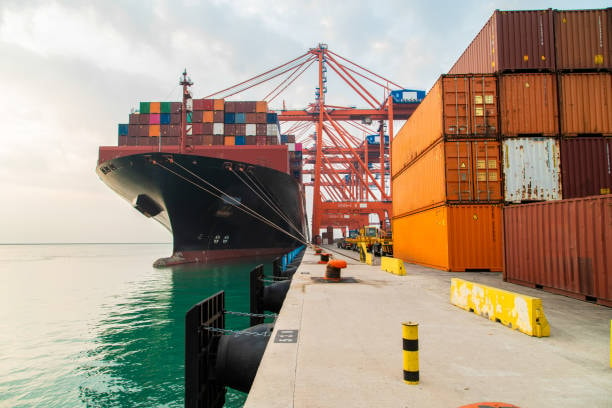
CY/CY is simple and its effectiveness is due to the ease in separating the responsibilities. Shippers and consignees have different responsibilities towards deliveries because shippers are responsible to receive their cargo to the origin container yard and multiple consignees have to take their goods to the destination container yard. All transporting and handling activities between these two points like vessel loading, ocean transport, and discharge operations are undertaken by the shipping line.
Understanding Container Yard Operations and Infrastructure
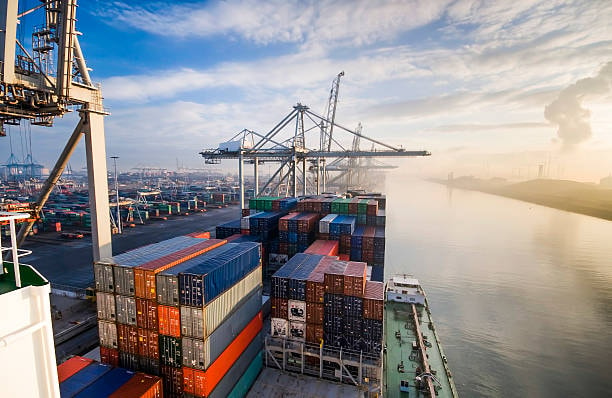
The key to operation of a modern port is the container yard the container terminal is storage and handling facility which handles containerized cargo on a temporary basis. These are special zones of the ports installed with advanced port infrastructure to deal with thousands of containers on a daily basis. Business enterprises using CY/CY shipping services should understand the mechanism of operation of container yards.
Innovative systems are sophisticated infrastructure and equipment that can be found in modern container yards and these are mostly, gantry cranes, reach stackers, container handlers and the automated guided vehicles (AGVs). Such facilities are well structured to have a specific place that handles different kinds of containers, such as refrigerated containers, dangerous cargoes, and oversize loads. The styling usually comprises of a rail interface, truck gates, and inspection so that cargo is easily moved around between various transport channels.

The management systems applied at container yards are the most advanced software that uses an efficient way of tracking the location of containers, the run-time, and maximization of space occupied by containers. These systems interface with port community systems and shipping line databases to give real time information on status and availability of containers. When a business is shipping CY/CY, knowledge of such operation processes assists in effective delivery scheduling and management of logistics expenses.
CY/CY vs Other Shipping Terms: Key Differences and Applications
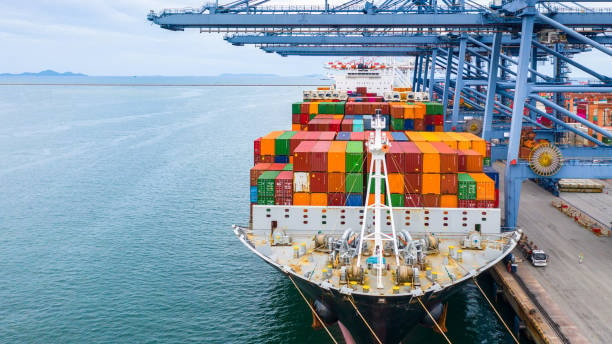
Although CY/CY is the most widely used method of shipping, it is important that one understands the cy cy term and how it differs with other shipping terms that are widely used. Container Freight Station to Container Freight Station (CFS/CFS): The less-than-container-load (LCL) container is shipped by the company in a mixed cargo that is arranged at the point of departure, and decongested on the other end. Contrary to the CY/CY charge, CFS/CFS needs more attention and records on various shippers freights on individual containers.
CY/CFS offers full container shipment to origin gate and LCL delivery at destination and CFS/CY consists of LCL pick up origin and full shipment delivery at destination. These hybrid services satisfy the needs of certain volume cargo and shipper and subject to more complex handling procedures than in the case of simple CY/CY operations.

Cửa đến cửa and door-to port services go beyond the bare CY/CY to add inland transportation in and out of container yards. Although they are more convenient, such services tend to be more expensive, and that introduces more entities in the supply chain. CY/CY is the cheapest solution to a shipper who is able to work out his or her own transportation to and out of his or her container yards.
Benefits and Advantages of CY/CY Shipping
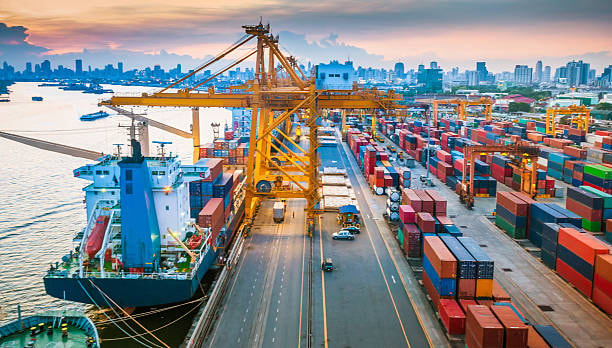
The CY/CY shipping has many benefits which has led it to become the delivery mode of international containerized cargoes, which helps reduce total shipping charges . The advantage is mostly that it is cost effective since there are no extra handling fees incurred when using this method as opposed to door to door/CFS services. Shippers will save great amounts of money when they employ their own means of transport to and back to container yards.
Another key benefit of CY/CY shipping is that of operational efficiency. The processes are standardized and have a minimum of handling points which eliminate the chances of transporting containers damage or delays significantly. The container yards work on a fixed schedule with anticipated processing and make planning of the supply chains and creation of inventories easier to business.

There is also increased security and integrity of cargo in CY/CY shipment. After being sealed at the origin container yard, the containers can no longer be opened until the point of arrival into the destination yard reducing chances of loss, contamination, or damages. This can be really useful to high value goods or sensitive freight where special handling conditions are necessitated.
With the CY/CY arrangements, the shipper is given flexibility where it decides on the mode and schedule of inland transportation for a single shipper . This is very useful to companies who have well developed logistics infrastructure or companies where supply chain cost is important and they wish to reduce cost through carrier partnerships.
Step-by-Step CY/CY Shipping Process
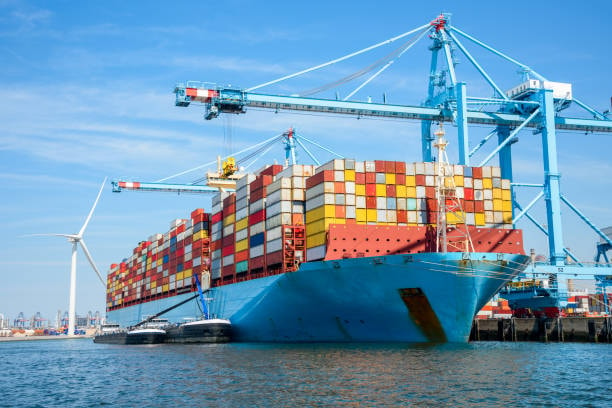
The CY/CY shipping procedure commences by the preparations of cargo, carriage charges, and the booking process. Shippers should acquire suitable containers, either by allocated shipment lines or by hiring means and they should prepare all the documentations involved such as commercial invoices, packing lists, and exportation declaration. Making sure that the cargo is packed and secured properly is the right way of ensuring that the cargo will go safe during its transportation.
As to the delivery to the origin container yard, the timing of container stuffing or dropping off at the terminals should be coordinated with the operators. Shippers shall adhere to the rules of the origin port’s cfs concerning the time of delivery, documentations, safety measures in the yard. Once cargo gets there, it is inspected on issues such as security and customs clearance and then thereafter loaded in designated vessels.
Ocean transportation is the main part of CY/CY shipping, where containers are shipped on vessels as per the stowage plan, which allows making a stable vessel and completing safely the shipping process. Shipping lines control the state of the containers in transit and give tracking details so that the supply chain can be viewed.
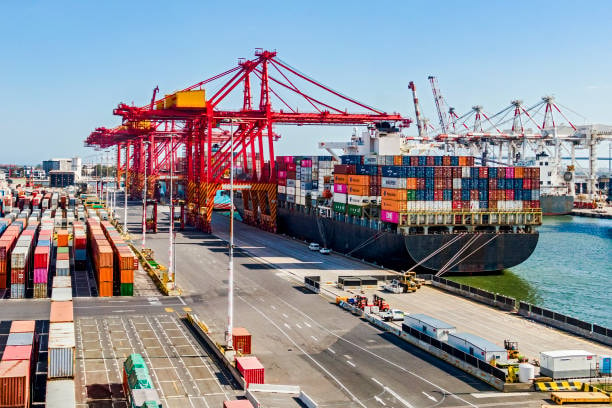
Container offloading is done at the destination port and stored in the container yard as required by the delivery schedules of containers and customer needs. Notifications of arrival are made to consignees of the consignment who should ensure timely pickup to avert the demurrage costs. The final part of the process includes clearance of the customs and formal deliveries to the premises of the consignee.
Documentation Requirements for CY/CY Shipments

Adequate documentation is of essence in CY/CY shipping operation. The bill of lading is the most important transport document, under which the contract of carriage between the shipper and the carrier is created and it is a receipt to cargo and document of title. In CY/CY shipment, there is proper identification of the local charges, terms of delivery and CY locations as stated in the bill of lading.
Commercial documentation involves the invoice, packing lists and certificates of origin which are needed to clear goods through the customs and documentation of compliances with trade. These documents should give precise descriptions of cargoes, values, and classification so as not to delay or be fined. Special freight can have an extra certificate like a phytosanitary certificate in the case of agricultural products or hazmat documents in the case of hazardous goods.
Equipment interchange receipts are container specific documentation that includes container condition and container damage surveys conducted at surrender points and delivery points. These documents also safeguard multiple sellers safeguard everybody as they impose liability on the damage of the containers and restore the proper provision of returning the equipments. Utility-based documentation tools are making these procedures smoother and are cutting down on paper and facilitating a more efficient processing procedure.
Cost Structure and Pricing Factors in CY/CY Operations
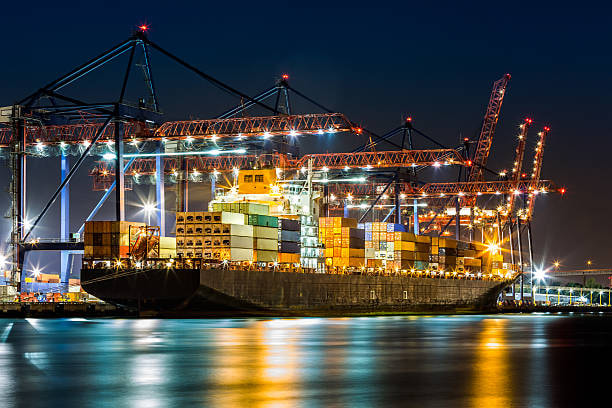
CY/CY freights have various parts and each is influenced by trade lanes, cargo levels as well as market. This is followed by the ocean freight rates, which constitute the largest portion of total costs, usually quoted on a per-unit-of container (TEU or FEU), and which vary as the result of supply and demand interactions, fuel rates, and seasonal circumstances. Knowledge of these rate structures assists in the business to streamline its shipping-related strategies and budgeting frame.
THC includes type of operations which are container yard costs such as loading, discharge area and storage services. Commonly, these charges are standardized by the port authorities though this can be varied depending on the type of containers, special handling and peak season. Regular shippers are commonly offered rates stability and volume discount in long term contracts with shipping lines.
Other expenses could be documentation fee, security charges and currency adjustment factors. Equipment Imbalance Surcharges are charged when repositioning of containers has to be done due to trades imbalance and peak season Surcharges are a reflect of constraint faced by the carriers during high demand seasons. Demurrage and detention fees punish returns of the shipping containers too late and prolonged application after free time limits elapsed.
Technology and Digitalization in CY/CY Logistics
Automation of systems and real-time connectivity brought by digital transformation also transformed CY/CY shipping operations. Electronic data interchange (EDI) helps in the smooth exchange of information among shippers, carriers as well as terminal operators leading to less manual work done to handle the information amongst them and increased accuracy carrier’s port. Such systems automatically produce booking confirmations, arrival notices and delivery orders and keep the audit trails to address compliance requirements.
Blockchain technology becomes the game-changer when it comes to CY/CY documentation because it offers the use of immutable records along with the removal of paper-based operations. The use of smart contracts in payment settlement automation and minimization of wrangling is achieved by setting conditions of the service being offered. The innovations create transparency and confidence among the players of the supply chain and lower administrative costs.
By fitting containers with Internet of Things (IoT) sensors, the cargo can be monitored in real-time: manufacturers can track cargo temperature, humidity, and level of shocks. This technology can also be of great help when dealing with sensitive cargo whose environment should be controlled all through the CY/CY process. IoT data provide predictive analytics used to avoid cargo damages, as well as optimization of handling processes.
Common Challenges and Solutions in CY/CY Shipping

The problem of congestion at ports is one of the critical issues in CY/CY shipping that cause a delay in the vessels due to additional movement involved , the rise of expenses, and the disruption of the supply chain. Possible remedies entail variety in choice of ports, flexible meeting of sailing time, and more complex booking system which will help to obtain space in container yards at high demand times port or container terminal. An effective way out of congestion is to cooperate with seasoned freight forwarders that would offer alternative routing and contingency planning discharge port.
Errors in documentation and compliance are the common reasons that lead to the delay of CY/CY shipments. Strong quality control measures and computerized document keeping systems do much to decrease error levels local charges payable. Conduction of frequent workshops on updated rules and prerequisites helps the logistics staff remain in line with the standards in international trade and customs formalities destination port’s container yard.
The shortage and imbalance in container equipment impacts the CY/CY operations especially at the time of peak shipping seasons or the effects of disruptions in trade container freight stations. Anticipatory container control by making early bookings, flexibility in choice of equipment and establishment of strategic alliances with equipment leasing firms alleviates these difficulties. Other container size and type can be a solution in the case when a standard one cannot be supplied multiple shippers.
Future Trends and Innovations in Container Yard Operations
Automation keeps reinventing container yard with self-reporting vehicles, automated container handling mechanisms, and optimization algorithms run on artificial intelligence. The technologies make the process of operation more efficient, lower the labor costs, and safety risks. Automated container yards run the clock at 24/7 minimal manpower allowing quicker time of turnover and better serviceability of the CY/CY movement.
Innovation in the creation of a container yard and its functionalities is motivated by sustainability projects. Energy-efficient lighting systems coupled with solar-powered equipments as well as electric cars minimize the costs of operations and help to reduce environmental impacts destination port’s cy. Green logistics such as measuring the carbon footprint and programs of reducing emissions fall in line with the sustainability objectives of the corporations and regulatory policies only the local charges.
Interconnections with smart city systems allow containers yards to control the traffic processes and minimize urban congestion. Linked systems schedule the arrival of trucks, make plans about scheduling appointments, and give real-time information about traffic so as to enhance the overall performance of the whole supply chain shipping company. The implication of these developments is that it helps to improve the dwell times and the predictability of CY/CY operations shipping compan.
Phần kết luận:
With the world trade growing constantly and supply chains proving more complicated, CY/CY shipping service has reached the point of being critical to businesses globally. Knowing the processes, advantages and issues let companies streamline their logistics strategies and gain the competitive advantages. As technology and sustainability advancements change and grow, the same is being done in CY/CY operation, but under the premise of adhering to the newly emerging needs of the international trade practices which are bettered by professional logistical suppliers such as GWT Worldwide whose offerings of extensive global freight forwarding facilitation is what aids in smooth international trade delivery port


Thank you for reading!
Have questions, corrections, or better ideas? We’d love to hear from you!
We value every piece of feedback and promise to reply within 24 hours. Let's make this guide better together!
Note: Spam comments will not be published.